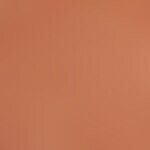Synonym(s)
DefinitionThis section has been translated automatically.
Sebaceous plug induced by hyperkeratosis in the excretory duct of a hair follicle. The comedo is the diagnostically groundbreaking efflorescence in acne vulgaris.
ClassificationThis section has been translated automatically.
A distinction is made:
- Microcomedones: develops from a follicular filament into a compact comedo. About 40-80 horny cell layers enclose 2-3 vellus hairs, numerous bacteria and sebum.
- Closed comedones (whiteheads) with a tobacco pouch-like closed opening. They are easily recognized by tensing the overlying skin.
- Open comedones (blackheads) with a wide opening and black-coloured, melanin-containing contents of horn material and sebum. Open comedones emerge from closed comedones through continuous growth. The comedone plug consists of hundreds of corneocytes adhered together, sebum, bacteria and possibly pityrosporum spores. Sebum flows undisturbed through lacunar canal systems to the skin surface. Furthermore, the vellus hair system continuously forms hairs which get caught in the comedone plug.
You might also be interested in
EtiopathogenesisThis section has been translated automatically.
Typically and most frequently occurring in the context of acne vulgaris. However, comedones also occur in elastotic skin due to a loss of elasticity of the fibrous systems which tighten the skin. As a result, the follicles are less strongly expressed and a retention of horn and sebum develops which can be recognized by a black or yellow-brown follicular plug.
LocalizationThis section has been translated automatically.
ClinicThis section has been translated automatically.
Closed comedo (Whitehead): Small, about 1 mm in size, rather inconspicuous, skin-colored, moderately consistent papule without visible follicular opening. No accompanying inflammatory reaction.
Open comedo (blackhead): 1-2 mm large, flat raised papule with a narrow, collar-shaped rim and a black keratotic center. The black apical part of the open comedo contains melanin originating from melanocytes of the acroinfudibula.
Comedones are the main symptoms of acne vulgaris and acne variants (see acne below). Retention comedones of different sizes (see below giant comedones) are found in older men over the spine or in the neck ( dilated pore). In elastoidosis cutanea nodularis et cystica (Favre-Racouchot disease), the formation of comedones is a sign of severe actinic elastosis; nevus comedonicus is a localized malformation of the skin.
HistologyThis section has been translated automatically.
- Early stage: Dilated, oval configured, cystic dilated infundibulum with thinly extended wall epithelium which is orthokeratotic keratinized by a stratum granulosum. Narrow follicleostium. In the centre of the cyst, evidence of compactly layered, eosinophilic horn masses with individual bacterial turf. Haircuts. Several atrophic sebaceous glands at the base of the comedones.
- Late stage: Dilated, sinusoidal twisted infundibulum with irregularly thick, ortho- or parakeratotic cornified squamous epithelium. In the centre of the comedo loosely layered, ortho- or parakeratotic corneal masses interspersed with numerous bacterial turf. Haircuts. In the upper part of the horn plug, evidence of numerous pityrosporon spores. Several atrophic sebaceous glands at the base of the comedones. Rupture of the follicular wall with intra- and perifollicular granulomatous inflammatory reaction with multinucleated giant cells of foreign body type.
Complication(s)(associated diseasesThis section has been translated automatically.
TherapyThis section has been translated automatically.
Note(s)This section has been translated automatically.
LiteratureThis section has been translated automatically.
- Friedman SJ, Su WP (1983) Favre-Racouchot syndrome associated with radiation therapy. Cutis 31: 306-310
- Gollnick HP, Krautheim A (2003) Topical treatment in acne: current status and future aspects. Dermatology 206: 29-36
- Jansen, T Plewig G (1998) Acne inversa. Int J Dermatol 37: 96-100
- Mavilia L et al (2002) Unilateral nodular elastosis with cysts and comedones (Favre-Racouchot syndrome): report of two cases treated with a new combined therapeutic approach. Dermatology 204: 251
- Keough GC et al (1997) Favre-Racouchot syndrome: a case for smokers' comedones. Arch Dermatol 133: 796-7
- Lees CW et al (1977) Analysis of soluble proteins in comedones. Acta Derm Venereol 57: 117-120
Incoming links (19)
Acne excoriée; Acne mechanica; Blackheads; Bromoderm; Camouflage; Chloracne; Contact acne; Cyst; Dilated pore; Exanthema, acneiformes; ... Show allOutgoing links (10)
Acne (overview); Chemical peeling; Comedonic nevus; Dilated pore; Elastoidosis cutanea nodularis et cystica; Follicle filament; Giant comedo; Malassezia; Papel; Pustule;Disclaimer
Please ask your physician for a reliable diagnosis. This website is only meant as a reference.























